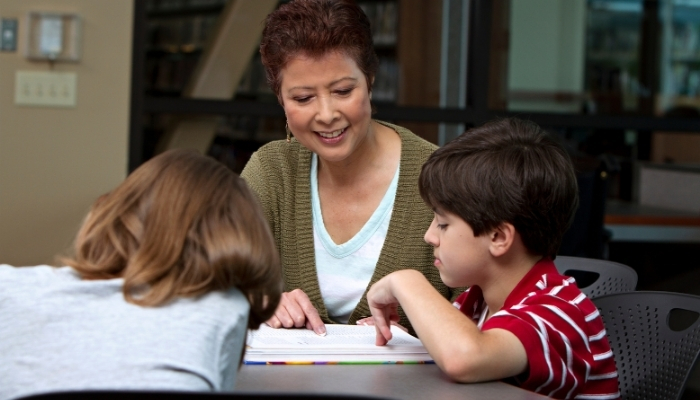You've watched your child struggle with homework. They read through the chapter once, twice, maybe even three times. But when you ask them what happened in the story, you get blank stares.
This scenario plays out in homes everywhere. Your child can read the words just fine. The problem is understanding what those words actually mean. This gap between reading and comprehending affects millions of kids. Without the right support, it holds them back in every subject, from math to science.
Critical reading is different from regular reading. It means analyzing what's on the page, asking questions, and truly understanding the message behind the words. These skills can be taught and strengthened. With the right guidance, your child can go from struggling to confident.
This blog will show you exactly how critical reading tutoring works, what to look for in a program, and how you can help your child become the kind of reader who tackles any text with ease.
Key Takeaways
-
Critical reading tutoring helps children move beyond surface-level understanding to analyse, interpret, and think independently across subjects.
-
Personalized instruction, guided practice, and continuous feedback make tutoring a powerful way to build lasting reading confidence.
-
The right tutor or program combines proven teaching methods, small group instruction, qualified instructors, and flexible scheduling.
-
FunFox’s Readers Club offers a balanced, research-based approach that turns reading into an enjoyable journey while strengthening essential comprehension skills.
Why Strong Critical Reading Skills Are the Foundation of Academic Confidence
Critical reading shapes how students learn, think, and communicate. It helps them move from simply understanding words to analyzing meaning and applying ideas confidently across subjects.

Strong reading skills support every area of study:
-
Math: Interpreting word problems accurately.
-
Science: Following instructions and understanding written data.
-
Humanities: Evaluating sources and forming reasoned arguments.
When students grasp information deeply, they participate more actively, solve problems independently, and express their ideas clearly. Each success strengthens self-belief and encourages active learning.
Beyond academics, critical reading develops life skills, including evaluating information, comparing viewpoints, and making informed judgments. These abilities form the foundation of confidence in school and beyond.
Structured guidance, such as tutoring, helps students develop these higher-order skills successfully, turning comprehension into genuine understanding and long-term academic assurance.
What Makes Critical Reading Tutoring So Effective?
Critical reading tutoring is effective because it provides focused instruction that builds comprehension through methodical, not memorization-based, approaches. It turns reading into a process that develops understanding, questioning, and reasoning skills, which general classroom time often cannot fully develop.
Tutoring achieves this impact through three essential strengths:
-
Targeted Instruction: A skilled tutor identifies the precise points where comprehension breaks down, whether it is recognizing relationships between ideas, interpreting complex language, or drawing conclusions. Lessons are then structured to strengthen those specific areas, allowing students to progress efficiently and confidently.
-
Guided Practice: Students learn to apply strategies that reveal meaning within the text. Tutors model how to identify main ideas, analyze evidence, and evaluate perspectives. With consistent practice, these strategies become automatic, helping students approach any reading task with structure and intention.
-
Ongoing Feedback: Regular assessment and discussion help students recognize their improvement. When progress is visible, motivation grows. Students begin to take ownership of their learning, developing both confidence and persistence.
Through this combination of personalization, guided skill-building, and measurable progress, critical reading tutoring equips students with the tools to think clearly, interpret accurately, and perform with assurance across all subjects.
Also Read: How to Make Reading Fun for Kids: 20 Easy Tips
Not every tutoring program delivers these results. Some fall short. Some overpromise. Some simply are not built right.
Choosing the Right Critical Reading Tutor for Your Child
Selecting the right tutor means finding someone who understands how children learn and can help them develop confident, independent thinking through reading. The most effective programs share several key qualities that directly influence results.

Here are the things you need to know for choosing the right tutor:
-
Look for Proven Teaching Methods
The most effective programs utilize research-backed strategies that have proven successful for thousands of students. Ask about their approach. Do they teach specific strategies, such as inferencing, scanning, and analysis? Programs built on solid educational research deliver consistent results.
-
Small Group Sizes
Your child should not get lost in a crowd. Small groups of 3 to 6 students hit the sweet spot. Teachers can give personalized attention. Students benefit from peer interaction. Everyone gets their questions answered. This balance creates the ideal learning environment.
-
Qualified Teachers
Look for programs that provide teachers with specialized training in literacy instruction. Passionate educators who understand how children learn keep students engaged and motivated. Experience teaching critical reading matters even more explicitly.
-
Flexibility That Actually Works for Your Life
Between work, activities, and dinner, life gets hectic. The right program works with your schedule. Evening sessions, weekend options, and recorded classes that you can watch later make tutoring a sustainable long-term option.
-
Ongoing Feedback that Keeps You in the Loop
You should never wonder how your child is doing. Quality programs provide regular updates and constructive feedback. You'll know what they're learning, where they're making improvements, and where they still require support. This three-way partnership between tutor, parent, and student creates the best results.
Understanding what to look for is half the battle. The other half is deciding between in-person and online tutoring.
How Modern Tutoring Platforms Bring Reading to Life?
Modern tutoring platforms have revolutionized the way children develop critical reading skills. While traditional face-to-face tutoring offers structure and personal attention, today’s online platforms extend those same benefits with added flexibility, accessibility, and engagement that fit modern family routines.

Let’s look at the key elements that make this approach better for your child:
-
Learning Comfortably at Home: Students learn best when they feel at ease. Online sessions enable children to study from familiar surroundings, allowing them to focus and participate more freely than in formal, unfamiliar tutoring spaces.
-
Flexibility That Keeps Learning Consistent: Without travel or rigid schedules, tutoring becomes easier to maintain. Parents can plan sessions around family activities, ensuring regular attendance and steady progress, which can be challenging with fixed in-person commitments.
-
Access to Expert Educators Everywhere: Online platforms remove geographic limits, connecting families with highly trained reading specialists who match each child’s needs. This access to diverse expertise ensures quality instruction regardless of location.
-
Interactive Tools That Deepen Engagement: Digital features such as live annotation, shared reading exercises, and visual aids make learning more dynamic. These tools transform lessons into interactive experiences that hold attention and strengthen comprehension.
-
Built-In Continuity Through Recorded Sessions: If a class is missed, recorded lessons allow students to review and reinforce key concepts at their own pace. This consistent access ensures uninterrupted learning, even when schedules change.
Modern tutoring platforms combine the personal support of traditional methods with the convenience and adaptability families need today, creating a learning experience that keeps reading both meaningful and enjoyable.
Among all the next-generation tutoring solutions, one approach stands out for its balance of personalization, engagement, and measurable progress.
FunFox's Approach to Critical Reading Tutoring
FunFox's Readers Club takes a unique approach to developing critical reading skills. Instead of viewing reading as another task, the program turns it into an activity students genuinely enjoy.
The program is uniquely suitable to build critical reading skills, and here is the reason why:
Built on Proven Educational Methods
FunFox uses curriculum-aligned strategies to develop foundational reading abilities. Each weekly one-hour Zoom lesson focuses on the core skills that separate struggling readers from confident ones.
The program develops:
-
Fluency in reading smoothly and naturally.
-
Comprehension of main ideas and details.
-
Inferencing to read between the lines.
-
Skimming and scanning for efficient reading.
-
Critical thinking to analyze and evaluate texts.
Teachers follow a structured approach combining educational games, hands-on activities, and process-based feedback. This keeps students actively engaged throughout every session.
Small Groups Create the Perfect Learning Environment
Classes cap at 3 to 6 students. This sweet spot strikes the perfect balance between the best of both worlds.
Your child gets individualized attention. Teachers adapt lessons to each student's needs. But your child also benefits from peer collaboration. They hear other perspectives. They learn from classmates. They build a supportive community of fellow readers.
Teachers Who Actually Know What They're Doing
FunFox's teaching team undergoes specialized professional development. These teachers know how to bring reading to life for young learners. They strike a balance between academic rigor and genuine fun, creating an environment where students feel safe taking risks and asking questions.
Resources That Support Learning Beyond the Classroom
Students access an interactive digital portal packed with useful materials. Worksheets reinforce concepts. Games make practice enjoyable. Curated reading materials provide students with texts at the appropriate level for their growth.
These resources support learning outside live lessons. Your child can practice independently, build confidence, and develop skills at their own pace.
Built-In Flexibility
All sessions are recorded and available for replay. If your child misses a class, they can watch the recording. They want to revisit a tricky concept; the video is there. Learning never has to stop, even when schedules get complicated.
Comes with Free Trial Class
FunFox offers a complimentary trial class, allowing your child to experience the program firsthand. You see the teaching style in action. You observe the interactive approach. Then, you can make an informed decision about whether it suits your family.
The program’s primary goal is to build genuine reading skills and critical thinking abilities that serve your child throughout their education and into adulthood.
Also Read: Reading Comprehension Games and Activities for Students
Things to Do at Home to Reinforce Critical Reading Skills
Tutoring provides expert guidance. Learning shouldn't stop when the session ends.

You don't need a teaching degree to support your child's reading development. A few simple, research-backed activities can reinforce what they're learning and help them grow even faster.
Here are strategies that actually work.
Turn Reading into Discussion
-
Ask open-ended questions that prompt reasoning and reflection.
-
Encourage your child to explain why events happen or how characters might feel.
-
Pause occasionally to predict what could come next, then revisit those predictions together.
-
Focus on understanding and interpretation rather than just finishing the story.
Read Multiple Books on the Same Topic
-
Select several books about one subject your child enjoys, such as animals, nature, or space.
-
Compare how each book presents similar ideas or facts.
-
Point out differences in writing style, illustrations, or conclusions.
-
Encourage your child to connect information and identify what they’ve learned across texts.
Use Films to Build Comparison Skills
-
Select a book that has a movie adaptation and explore both the book and the movie.
-
After watching, discuss what the film included, changed, or left out.
-
Ask your child which version helped them understand the story better and why.
-
Highlight how different formats shape meaning and interpretation.
Get Visual With Graphic Organizers
-
Create simple visual tools such as charts, story maps, or timelines.
-
Use them to track characters, sequence events, or show cause and effect.
-
Encourage your child to draw connections between ideas using arrows or color codes.
-
Display these visuals as quick reference guides for future reading.
Practice Reading Between the Lines
-
Guide your child to spot opinions, bias, or persuasive language.
-
Ask questions like “What evidence supports this idea?” or “What does the author want readers to believe?”
-
Read short articles or age-appropriate news stories together and analyze tone and word choice.
-
Help them see how language can influence meaning beyond what’s stated directly.
Model Reading as a Shared Value
-
Read your own materials regularly, like novels, magazines, or articles, and keep them visible.
-
Share short reflections about what you found interesting or surprising.
-
Visit libraries or bookshops together to choose new materials.
-
Demonstrate that reading is not only beneficial but also enjoyable and essential in daily life.
Also Read: Top 15 Books for Shared Reading in Kindergarten
Encourage Predictions and Reflections
-
Have your child keep a short reading journal.
-
After each session or chapter, they can write or draw what happened.
-
Ask them to predict what might come next and revisit those thoughts later.
-
Review their notes together to recognize progress and understanding.
Consistent engagement at home reinforces the concepts introduced in tutoring. Each small step builds stronger comprehension, curiosity, and lasting confidence in reading.
Small, regular practice adds up to massive improvements over time.
Conclusion
Every child deserves to feel confident when they open a book, not lost, not frustrated, but curious and capable. The proper critical reading tutoring program fosters a mindset where reading becomes an exploration, not an obligation.
FunFox’s Readers Club makes that possible. Its small-group lessons, interactive activities, and expert teachers turn comprehension into connection, helping kids think more deeply, question more intelligently, and enjoy every story they read.
Give your child the gift of confidence that lasts far beyond the page. Discover how FunFox’s approach can reshape their learning journey. Book your free trial today and watch their love for reading grow, one story at a time.
FAQ’s
1. How do you teach critical reading?
Critical reading is taught through guided questioning, text analysis, identifying arguments, interpreting evidence, and discussing meaning. Students learn to connect ideas, evaluate information, and reflect on an author’s intent.
2. What are the five characteristics of critical reading?
Critical reading involves analysis, interpretation, evaluation, reflection, and reasoning. These characteristics enable readers to understand the context, assess the reliability, compare viewpoints, and draw thoughtful conclusions from complex or unfamiliar materials.
3. What are the five steps to reading critically?
The five steps include previewing the text, identifying main ideas, questioning assumptions, analyzing evidence, and forming interpretations. This structured process builds deeper comprehension and strengthens independent thinking skills.
4. How does the brain learn to read?
The brain learns to read by associating visual symbols with sounds, linking them to meaning, and activating regions responsible for language, memory, and comprehension through repeated practice and exposure.















